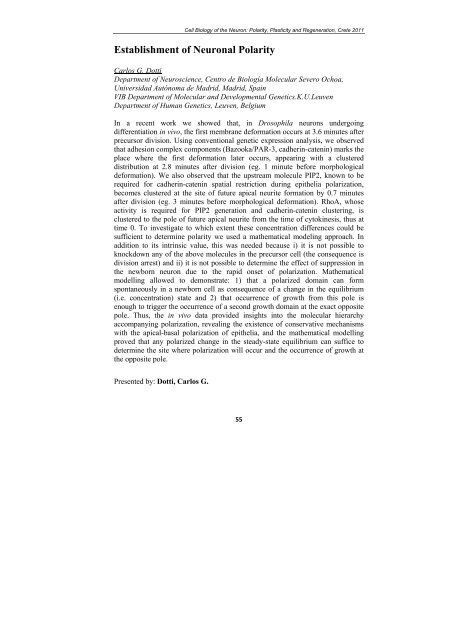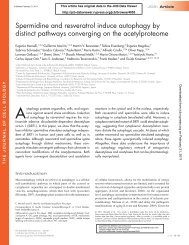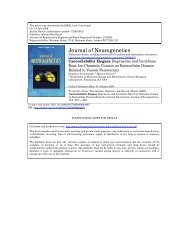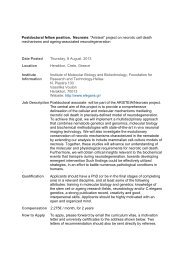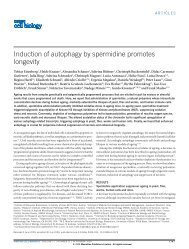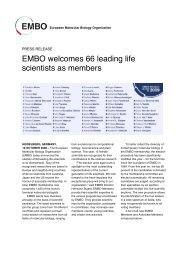CELL BIOLOGY OF THE NEURON Polarity ... - Tavernarakis Lab
CELL BIOLOGY OF THE NEURON Polarity ... - Tavernarakis Lab
CELL BIOLOGY OF THE NEURON Polarity ... - Tavernarakis Lab
Create successful ePaper yourself
Turn your PDF publications into a flip-book with our unique Google optimized e-Paper software.
Cell Biology of the Neuron: <strong>Polarity</strong>, Plasticity and Regeneration, Crete 2011<br />
Establishment of Neuronal <strong>Polarity</strong><br />
Carlos G. Dotti<br />
Department of Neuroscience, Centro de Biología Molecular Severo Ochoa,<br />
Universidad Autónoma de Madrid, Madrid, Spain<br />
VIB Department of Molecular and Developmental Genetics.K.U.Leuven<br />
Department of Human Genetics, Leuven, Belgium<br />
In a recent work we showed that, in Drosophila neurons undergoing<br />
differentiation in vivo, the first membrane deformation occurs at 3.6 minutes after<br />
precursor division. Using conventional genetic expression analysis, we observed<br />
that adhesion complex components (Bazooka/PAR-3, cadherin-catenin) marks the<br />
place where the first deformation later occurs, appearing with a clustered<br />
distribution at 2.8 minutes after division (eg. 1 minute before morphological<br />
deformation). We also observed that the upstream molecule PIP2, known to be<br />
required for cadherin-catenin spatial restriction during epithelia polarization,<br />
becomes clustered at the site of future apical neurite formation by 0.7 minutes<br />
after division (eg. 3 minutes before morphological deformation). RhoA, whose<br />
activity is required for PIP2 generation and cadherin-catenin clustering, is<br />
clustered to the pole of future apical neurite from the time of cytokinesis, thus at<br />
time 0. To investigate to which extent these concentration differences could be<br />
sufficient to determine polarity we used a mathematical modeling approach. In<br />
addition to its intrinsic value, this was needed because i) it is not possible to<br />
knockdown any of the above molecules in the precursor cell (the consequence is<br />
division arrest) and ii) it is not possible to determine the effect of suppression in<br />
the newborn neuron due to the rapid onset of polarization. Mathematical<br />
modelling allowed to demonstrate: 1) that a polarized domain can form<br />
spontaneously in a newborn cell as consequence of a change in the equilibrium<br />
(i.e. concentration) state and 2) that occurrence of growth from this pole is<br />
enough to trigger the occurrence of a second growth domain at the exact opposite<br />
pole. Thus, the in vivo data provided insights into the molecular hierarchy<br />
accompanying polarization, revealing the existence of conservative mechanisms<br />
with the apical-basal polarization of epithelia, and the mathematical modelling<br />
proved that any polarized change in the steady-state equilibrium can suffice to<br />
determine the site where polarization will occur and the occurrence of growth at<br />
the opposite pole.<br />
Presented by: Dotti, Carlos G.<br />
55


